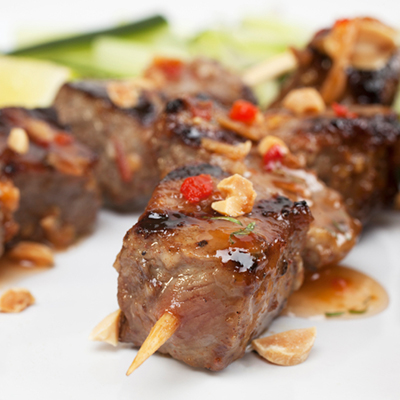- Strawberries
- Cook With Apples
- Grapes
- Grapefruit
- Lemons
- Cabbage
- Asparagus
- All About Bulb Vegetables
- All About Cruciferous Vegetables
- Squash
- All About Root Vegetables
- The Gift of Spice
- Thyme
- Basil
- Raspberries
- All About Tuber Vegetables
- Marjoram / Oregano
- Lemongrass / Citronella
- All Our Fruits, Vegetables and Fresh Herbs
- All About Exotic Fruits
- All About Legumes
- Cooking Pears: Three Inspirational Methods
Lime

Native to India and Malaysia, the lime was first introduced in France and Italy in the 13th Century during the Crusades. Christopher Columbus was said to have brought lime seeds to the New World during his second trip in 1493.
Characteristics
The lime, most frequently associated with the lemon, is a round fruit about the size of a ping-pong ball. The colour of its skin varies from yellow to green and its flesh, which depending on the variety may or may not contain seeds, is generally greenish, juicy and very fragrant.
Culinary tips and advice
- Choose a lime that is heavy for its size, which is a good indication that it is juicy on the inside. The presence of brownish spots on the skin will not usually affect the flavour.
- A zest of lime adds a lot of flavour to all rum and tequila-based cocktails.
- To obtain a larger quantity of juice, warm the lime before pressing it. Pour a little boiling water on the lime and let rest for 5 minutes or microwave it for 30 seconds.
- Lime can replace lemon in most recipes. If you are doing so, reduce the quantity because the flavour of the lime is more pronounced.
- Lime is a basic ingredient in Latin American, Arabic, African and Indian cooking. It can be used in main dishes, soups, vinaigrettes, sauces and desserts.
- Lime juice can be frozen, but it must be sweetened beforehand or it will become bitter. Combine 250 ml (1 cup) of lime juice with 75 ml (1/3 cup) of sugar and stir until the sugar dissolves. Pour the juice in an ice cube tray and place in the freezer. Once the cubes are formed, placed them in a plastic bag and return them to the freezer. Each cube equals the juice of approximately one lime.

Availability
More plentiful from June to August, the lime is available year-round at Metro supermarkets.
Nutritional value
Limes, like lemons, are very low in calories. They also contain vitamin C.
Storage life
Limes are highly perishable if left at room temperature; they have a tendency to dry out quite rapidly. To extend their storage life, wrap limes in paper towels and place them in a plastic bag. Store in the fruit drawer of your refrigerator and they will keep for three months.
Limes tend to yellow when exposed to strong light; they lose their characteristic tartness and their vitamin C content decreases.















